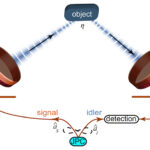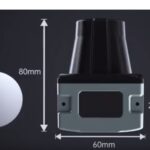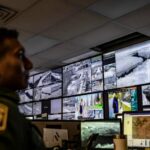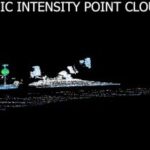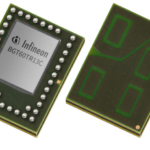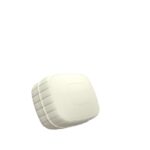It generates quantum entanglement between a microwave resonator and a signal that is emitted toward a target and can theoretically make radar detection up to four times faster in scenarios with comparable signal power and target noise. It also reduces susceptibility to jamming. A microwave quantum radar begins with a stream of entangled visible-frequency photons […]
RADAR/LiDAR
LiDAR, laser rangefinders, and optical fiber test equipment by up to 50% with sensors
Phlux Technology announces its first product, the Aura family of 1550 nm devices based on the company’s Noiseless InGaAs APD technology. The sensors are 12X more sensitive than traditional best-in-class InGaAs APDs. As a result, the operating range of LiDAR, laser rangefinders, and optical fiber test equipment can be extended by up to 50% with […]
What advanced sensing techniques are used in cobots?
Most robots incorporate a broad range of sensing technologies to better understand the operating environment and to fulfill their design purpose. These sensors provide information about position, size, orientation, velocity, distance, temperature, weight, force, and more. For collaborative robots or cobots that operate in a close proximity to and even interact with humans, additional sensing […]
How have smart sensors changed within the last few years? Pt 2
The true value of a smart sensor comes from its ability to analyze, interpret, and convert the acquired data into usable information. This can be achieved by the sensor itself or its use in a sensing node. Additional attributes with high value that can offset increased cost include self-calibration, fault-detection, higher reliability and reduced maintenance […]
UWB radar sensor for people positioning
NOVELDA announced that NOVELDA will give a preview of the people positioning and people tracking capabilities of its UWB radar sensors at CES 2023. An innovator in solutions for the audio video market has recently embedded NOVELDA’s next-generation UWB radar sensor in its smart speakers, debuting at CES. NOVELDA’s technology directs high-quality sound to wherever […]
Flash LiDAR supports over-the-air updates for automotive apps
PreAct Technologies, an Oregon-based developer of near-field flash LiDAR technology, announced that its T30P flash LiDAR is now available. Vehicles with software-defined architectures require sensor technology that can support over-the-air updates over the life of the vehicle, and PreAct’s T30P sensor is the only flash LiDAR capable of meeting this requirement. As the industry’s first […]
Lidar sensor features range exceeding 1,000 m
The Eyeonic Vision Sensor has demonstrated the ability to perceive, identify, and avoid objects at a range of more than 1 kilometer. Having previously demonstrated a detection range of more than 500 m at CES earlier this year, SiLC has now optimized its technology to go beyond 1,000 m–a feat that no other company can […]
Can 60 GHz radar sensing change healthcare monitoring?
According to a 2019 article in Nature,blood pressure (BP) abnormalities, such as hypotension and hypertension, are important risk factors for many short- and long-term critical illnesses, with a global disease impact on about 1.25 billion people [1]. In addition to the high number of people with blood pressure issues, sleep apnea is a rapidly increasing […]
What software-definable sensors are available now?
Sensor designers are pursuing software-defined (or programmable) sensors for their increased relevance and applications in the Industrial Internet of Things (IIoT). Automobiles are one market segment that can benefit from over-the-air (OTA) update capabilities and automakers have the resources to make significant changes to implement them. OTA updates are one way to future proof vehicles, […]
Human presence detection and you
By Charles Pao, Senior Marketing Specialist at CEVA Mobile phones and tablets are getting more powerful, but if you’re serious about doing work (remotely), the dedicated work laptop still reigns supreme. Privacy and productivity have become increasingly important in this new paradigm of working anywhere. To help with both in the age of mobile computing, […]

